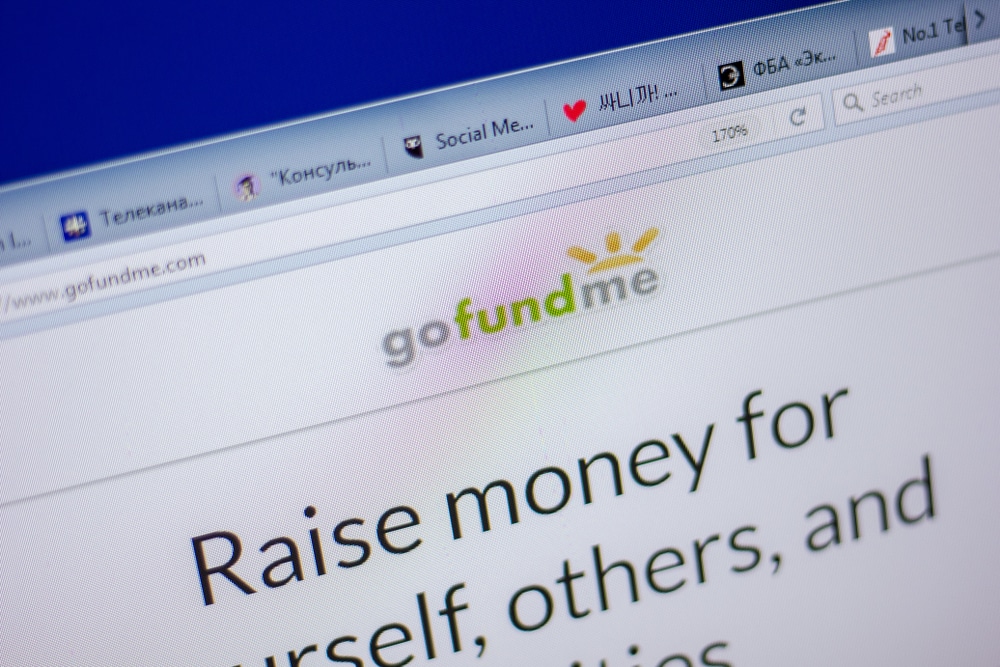Jasmine Birtles
Your money-making expert. Financial journalist, TV and radio personality.

Over recent years we have seen a surge of people in the UK crowdfunding their health-care for many reasons. Here at MoneyMagpie, we are going to take a look at how to run a medical crowdfunding campaign and all that it entails.
Not having access to certain treatments and not being able to access them quickly enough (especially in the pandemic, which now has a five year waiting list for certain procedures via the NHS) has meant that more and more people are having to go private – in spite of NHS efforts to stop this – by actually paying billions to private healthcare providers themselves.
Some procedures simply aren’t available. And, as our transatlantic friends know, this is not something affordable to a large number of people. Only 11 per cent of the UK already use private healthcare and most treatments aren’t available under basic policies, leaving a huge gap in both wealth and treatments.
The Guardian reported in July this year that the UK is actually heading towards a more two-tiered healthcare system and that the “growth of a more mixed healthcare economy, in terms of both NHS treatment carried out in private sector and self-payers, is starting to normalise the idea of private healthcare.”

Last year there was a very high profile campaign of this nature for Azaylia Cain. The daughter of former footballer Ashley Cain, was diagnosed with a very rare Leukemia (AML) and after exhausting every treatment available in the UK, he and his wife were given the horrific news that they were out of options. They did, however, find a doctor in Singapore who might be able to help, so they set up a crowdfunder to get them over there (during Covid restrictions).
Although the story had the horrific ending of them losing their beautiful girl, the crowdfunding was successful and they raised over one million pounds. Giving them, in the darkest days of their life, hope.
The same could be said last year, when the family and friends of former Big Brother contestant Nikki Graham used Go Fund Me to get emergency medical intervention and treatment for her Anorexia Nervosa. Mental Health services are incredibly difficult to access via the NHS and much like the campaign for little Azaylia, Nikki’s loved ones were faced with a desperation to do all they could to save a loved one’s life, something many people are finding themselves facing and not knowing where to turn.
The sad thing that both these stories share is that both people were just too sick to survive and in spite of people’s generous donations, both people died. In spite of the horrific endings, both campaigns surpassed their targets and both people came close to getting the treatment so desperately needed.
These were both fairly high profile campaigns, including people with celebrity and large online followings. Not everyone, of course, has access to that so we want to look at ways to give your campaign traction.How to do it?
Medical crowdfunding is in fact no different to any other type of crowdfunding, and running a basic campaign for healthcare is the same as for anything. First of all we need to pick our provider.

Each has its own benefits.
Using a big platform like JustGiving allows you to access people willing to donate outside of your immedaite friends and family group. Donations go directly into your bank account and can be with you within 6 – 10 days.
Justgiving say: “It’s free to sign up and create a Crowdfunding Page on JustGiving and at the end of your campaign, we’ll send everything you raise to you directly, minus card-processing fees.”
The fee per transaction for donations made in GBP via debit or credit card is 2.9% plus 25p. They have however given the option for contributors to cover this fee themselves so it won’t come out of the final amount.
JustGiving have done away with a 5% fee taken from the donation. Instead, they are now asking donors to add a small tip on top of their donation to keep us running and improving.
Importantly you will recieve the fees even if you don’t hit your target.
GoFundMe have the same fees as JustGiving and very similar policies. The main difference we can see is that “GoFundMe organisers don’t have to worry about falling short of their target because, unlike many similar platforms, there are no deadlines, limits or penalties for fundraisers staying live. Fundraisers remain online until you turn off donations or remove them. If you choose to, you can leave your fundraiser active indefinitely and continue accepting donations even after reaching your goal.”
On JustGiving, you have to go in and manually extend.
According to London Medical Consierge; “Across the UK, over £15.5 million has been raised in GoFundMe’s ‘Medical Illness and Healing’ category since 2010, making it the site’s most heavily utilised fundraising category. The average total amount raised by a typical medical campaign in the UK is £3,100, with the average donation to a campaign being £41.”
Other, more specialist places, like Tree of Hope use the crowdfunding model, while reaching out for help on a case by case study. While technically a charity it is a specialist way for fundgivers to give to children via a crowdfunding type platform. Their website states that “Tree of Hope is the crowdfunding charity that helps children and young people with a disability or illness by supporting their families to raise the money they need to pay for specialist care that is not freely available through the UK healthcare system.”

Even before starting your crowdfunding campaign, try reaching out to friends or family who might be able to join your team. You may be surprised to find how supportive and enthusiastic one or two individuals you already know are about your campaign.
Also consider using social media to announce your search for help in running a campaign, as there are thousands of kind and helpful people among the masses who may be aware of the issue you’re raising money for. You may also make some new allies this way.
However you do it, reaching out for assistance could net you the help you need in running a campaign, which is not a straightforward thing to do.
When drafting your pitch, it’s generally people issues and individual stories that people are interested to read about and support: be honest about the situation that you, or the person the campaign is about, find yourself in. Again, you’ll be surprised by the kind of support that will come in from friends but also unlikely sources, either from people who are aware of the situation or complete strangers who can sympathise.
Photos and videos support what you’re writing and break up large blocks of text, drawing the eye towards the stories of the people and involved. People are put off by huge swathes of writing but statistically, they’ll stay to read your text once they’ve looked at your photos. A short video or two to launch the campaign, or added along the way, goes a long way in presenting you or the subject of the campaign to the people you want to reach.

Your supporters will be keen to hear from you about how your campaign went.

According to the medical journal; “Ethical concerns have been raised about medical crowdfunding, including implications for equity, resource allocation, medical decision-making, the promotion of non-evidence based therapies, platforms’ lack of transparency and corporate interests.” This means that medical crowdfunding actually implies a shortcoming in health service provision.
There is no firm evidence base for establishing answers to even the most basic questions, such as who is seeking funds, for what, where and why. Making it hard to see from existing research whether medical crowdfunding is a response to gaps in service provision, supports ‘queue jumping’ and how it relates to ‘medical tourism’.
However, what we ask is: is this really the problem of the people seeking the help?
In universal healthcare systems (like the NHS), medical crowdfunding is a feasible option when we need to finance alternative, complementary, experimental and scientifically poorly supported therapies not financed by the NHS or healthcare systems worldwide.
Disclaimer: MoneyMagpie is not a licensed financial advisor and therefore information found here including opinions, commentary, suggestions or strategies are for informational, entertainment or educational purposes only. This should not be considered as financial advice. Anyone thinking of investing should conduct their own due diligence.

Interesting to read.